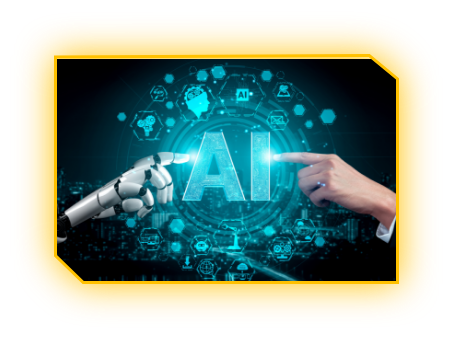
Introduction:
Understanding the next leap in enterprise automation
For decades, automation has been the quiet engine behind software delivery. From build scripts to deployment pipelines, it’s made development faster, cleaner, and less error-prone. But traditional automation still relies on one assumption — that humans must define every rule in advance.
That’s exactly where Agentic AI breaks from convention. It brings a new intelligence layer that understands why a process exists, not just how it runs.
In other words, Agentic Gen AI doesn’t just follow instructions — it learns from context, adapts in real time, and collaborates across teams.
The Limits of Traditional Automation
Conventional automation is like a to-do list: a set of prewritten steps that execute when triggered. It works perfectly—until something changes.
An updated code dependency, a new compliance requirement, or a restructured workflow can break the sequence. Every change needs manual reconfiguration, which defeats the point of speed.
In large enterprises, this rigidity often results in:
- Siloed automation scripts owned by individual teams.
- Delays when one workflow depends on another.
- Manual tracking between systems to maintain visibility.
These systems get the job done, but they don’t think. And when the environment evolves, they can’t evolve with it.
Agentic AI: A Smarter Way to Automate
Agentic AI takes the foundation of automation and adds cognition — a sense of awareness about what’s happening around it. Instead of executing tasks blindly, it recognizes relationships, predicts dependencies, and communicates outcomes.
For example:
- A testing agent can decide which cases to rerun based on recent commits.
- A compliance agent can trigger documentation updates automatically.
- A deployment agent can monitor performance and self-correct issues before users notice.
It’s the difference between automation that reacts and automation that anticipates.
How Agentic Gen AI Works
At the core of Agentic Gen AI frameworks like Sanciti AI lies a network of specialized agents. Each agent performs a defined role but shares context across the ecosystem. Together, they deliver a dynamic orchestration layer that spans development, QA, and operations.
- RGEN captures requirements and use cases automatically.
- TestAI manages functional and performance testing.
- CVAM finds and fixes vulnerabilities in real time.
- PSAM automates production support and ticket analysis.
When these agents operate together, they create what enterprises call a self-optimizing automation network — one that continuously learns from every iteration.
Discover how this architecture works in practice: How to Create Your Own Software with Agentic AI: Building Smarter, Not Harder.
Copilot vs Agentic AI: A Key Distinction
The rise of AI copilots has transformed how developers code. Copilot-style tools assist individuals by suggesting snippets, fixing syntax, or offering quick references. They improve personal productivity—but stop there.
Agentic AI, on the other hand, is built for organizations, not individuals. It doesn’t just help one developer write better code; it coordinates hundreds of moving parts across the software lifecycle.
It integrates coding, testing, compliance, and release into a continuous, intelligent feedback loop.
| Function | Copilot-Style AI | Agentic AI |
| Scope | Individual productivity | Enterprise-wide orchestration |
| Learning | Code-level | Contextual, cross-system |
| Governance | Manual oversight | Automated compliance |
| Scalability | Per user | Across teams and workflows |
Understand the Copilot vs Agentic AI gap in enterprise automation through real-world applications in Why Agentic AI Is the Enterprise Alternative to Copilot-Style AI.
Why Enterprises Are Moving Beyond Scripts
In an enterprise environment, automation isn’t just about saving time—it’s about ensuring quality, security, and scalability.
Traditional tools execute linear commands but can’t share awareness across systems. Agentic Gen AI brings that missing layer of intelligence. It recognizes how one team’s work affects another’s output and aligns them automatically.
For instance:
- A security update can trigger new test generation automatically.
- QA metrics can inform future deployment logic.
- Release data feeds back into requirement recommendations.
This adaptive feedback loop keeps every function continuously optimized—something no static automation script can achieve.
Building on Real Enterprise Context
Unlike generic automation software, Agentic AI systems like Sanciti AI integrate deeply into enterprise stacks: GitHub, JIRA, Jenkins, Azure, and more.
They don’t just plug in—they synchronize, analyze, and optimize.
This architecture ensures:
- Continuous visibility across all project layers.
- Policy-driven governance at every step.
- Reduced QA overhead by up to 40%.
- Faster time-to-market, with automation that learns.
Explore how Agentic Gen AI frameworks enable enterprise-scale collaboration in The Role of Agentic AI in Multi-Team Collaboration.
The Business Case for Agentic Gen AI
CIOs and CTOs are shifting from “automate tasks” to “automate intelligence.” They’re recognizing that Agentic Gen AI platforms deliver ROI not just through efficiency but through clarity—by making processes visible, measurable, and self-correcting.
The business impact is significant:
- 30–40% faster SDLC velocity.
- Lower operational costs through automated coordination.
- Improved compliance accuracy with embedded checks.
- Greater developer satisfaction, as routine steps vanish.
More than a productivity upgrade, Agentic AI represents a strategic shift toward intelligent orchestration—the foundation of enterprise modernization.
Conclusion
The difference between traditional automation and Agentic AI is the difference between scripted actions and intelligent orchestration.
While old systems do what they’re told, Agentic Gen AI anticipates what needs to happen next. It learns, adapts, and collaborates across functions—bringing people, processes, and performance together in real time.
As enterprises modernize, those who adopt this new generation of automation won’t just move faster; they’ll move smarter.